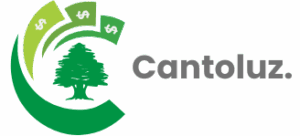Buying a home can feel like trying to solve a Rubik’s Cube blindfolded. With rising prices and hefty down payments, many potential homeowners are left scratching their heads. But what if there’s a way to step into your dream home without emptying your wallet? Enter FHA zero-down alternatives—your ticket to homeownership without the financial gymnastics.
Table of Contents
ToggleUnderstanding FHA Zero-Down Alternatives
Various options exist for individuals seeking to purchase a home without a significant down payment. USDA loans represent one alternative, specifically available to rural and suburban homebuyers meeting income criteria. Another option involves VA loans, which cater to veterans, active-duty military personnel, and certain eligible spouses, offering the possibility of zero down payment.
Conventional loans with lender-paid mortgage insurance can also serve as a viable route. This approach allows for lower upfront costs, distilling the financial burden for first-time buyers. Some state or local programs provide assistance, covering down payment and closing costs. Programs like these often target low-to-moderate-income households, reflecting efforts to expand homeownership.
Partnerships with nonprofits frequently grant additional financial support. These collaborations can provide funding to cover the down payment, plus possible ongoing guidance through the home buying process. Many employers now offer grant options, helping employees access financial resources to reduce barriers that accompany homeownership.
For those considering grants and assistance programs, research plays a crucial role. Exploring eligibility requirements and application processes ensures alignment with individual circumstances. Benefits derived from financial education workshops can enhance understanding, increasing the probability of homeownership success.
Ultimately, navigating these FHA zero-down alternatives involves careful evaluation. Identifying the right mix of options ensures a smoother path toward achieving homeownership while minimizing financial strain.
Types of FHA Zero-Down Alternatives
FHA zero-down alternatives provide several viable options for prospective homeowners. These alternatives cater to varied needs, ensuring a broader access to homeownership opportunities.
USDA Loans
USDA loans target rural and suburban homebuyers, ensuring access to homeownership in less populated areas. These loans offer zero down payment and lower mortgage insurance costs. Eligibility primarily depends on income limits, ensuring assistance reaches low to moderate-income households. Additionally, the property must meet designated rural guidelines, expanding options for many buyers. With USDA loans, borrowers benefit from competitive interest rates, further enhancing affordability. Many find this option appealing due to its flexibility in terms of credit scores. As a result, individuals can secure homes without significant upfront costs while enjoying long-term savings.
VA Loans
VA loans support veterans and active-duty military personnel seeking homeownership. These loans require no down payment and come with favorable terms, fostering accessibility. Eligibility guidelines include service duration and specific discharge conditions, ensuring support reaches deserving individuals. Interest rates often remain lower than conventional alternatives, which directly benefits borrowers. Furthermore, VA loans feature no private mortgage insurance requirement, reducing monthly expenses. Many veterans appreciate the additional financial guidance provided through VA resources. With these advantages, VA loans represent a strong option for those who have served their country.
Private Mortgage Insurance (PMI) Options
Private mortgage insurance (PMI) serves as a financial tool for those unable to provide a substantial down payment. Many lenders require PMI for borrowers with less than 20% equity in their homes. This insurance protects the lender in case of default, enabling borrowers to access home financing sooner.
Several PMI options exist, allowing flexibility based on financial situations. Borrowers can choose lender-paid mortgage insurance (LPMI). LPMI integrates the insurance cost into the mortgage interest rate, reducing upfront expenses. Alternatively, borrower-paid mortgage insurance (BPMI) separates the PMI from the mortgage payment. This option allows borrowers to handle premiums through monthly payments, providing transparency.
Pricing for PMI varies by lender, with rates dependent on loan amount and credit score. Many lenders offer ease in determining the best PMI rate based on unique borrower profiles. Knowledge of how PMI works is crucial, as it adds to the overall cost of homeownership.
Borrowers can cancel PMI once they reach 20% equity in their home through appreciation or additional payments. Awareness of this feature can offer long-term savings, making homeownership more affordable as equity builds. Exploring different PMI options empowers them to make informed decisions.
In some cases, government-backed loans feature no PMI at all. VA loans cater to eligible veterans and active-duty service members, eliminating this extra burden. USDA loans similarly provide low to moderate-income households an opportunity for homeownership without PMI requirements, facilitating access to housing even in rural areas.
Benefits of FHA Zero-Down Alternatives
FHA zero-down alternatives offer several distinct advantages that enhance the accessibility of homeownership. These options reduce financial pressure, making it easier for buyers to enter the real estate market.
Lower Initial Costs
Lower initial costs represent one of the primary benefits of FHA zero-down alternatives. USDA loans and VA loans eliminate the need for a down payment, allowing buyers to conserve cash for other expenses. Monthly mortgage payment amounts decrease significantly for many buyers when there’s no upfront payment requirement. Additionally, some state and local programs provide funding assistance that complements these loans, further minimizing out-of-pocket costs. Homebuyers can acquire properties with lower initiation costs while avoiding the burdens associated with hefty down payments.
Access to Homeownership
Access to homeownership improves significantly through FHA zero-down alternatives. These options target individuals who may otherwise struggle to purchase a home due to financial constraints. USDA loans support low to moderate-income families in rural areas, while VA loans extend benefits exclusively to veterans and active-duty military members. Flexible credit requirements in these programs broaden potential buyer eligibility, reducing barriers that often prevent homeownership. State and local assistance programs further enhance opportunities for first-time buyers by providing grants and resources. As a result, many more individuals can become homeowners despite previous financial challenges.
Exploring FHA zero-down alternatives opens doors for many aspiring homeowners. With options like USDA and VA loans offering no down payment and favorable terms, individuals can navigate the housing market with greater ease. State and local assistance programs further enhance these opportunities, providing vital support for those facing financial constraints.
Understanding the nuances of these alternatives and the role of Private Mortgage Insurance can empower buyers to make informed decisions. By taking advantage of these resources, potential homeowners can achieve their dreams while minimizing financial stress. This approach not only fosters homeownership but also contributes to long-term financial stability.



